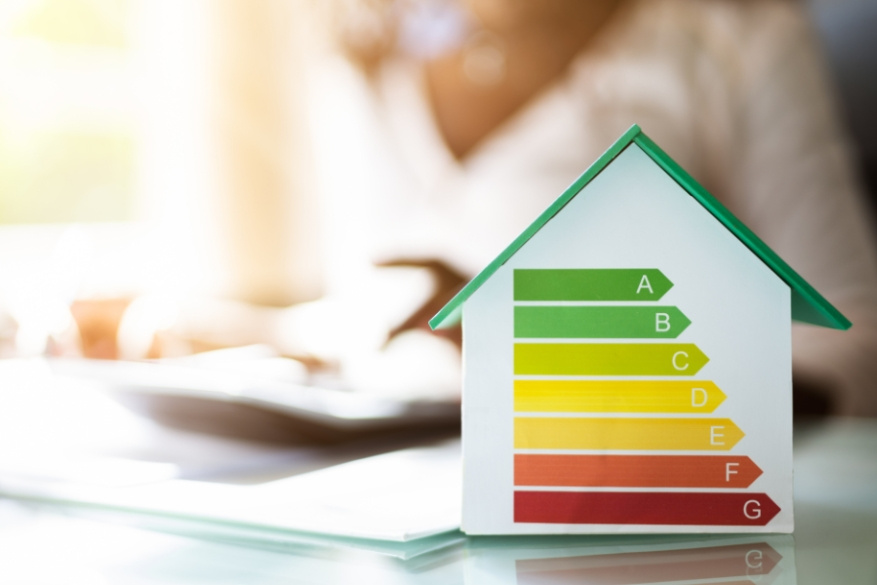- Quem Somos
- Produtos
- Acesso a Clientes
- Notícias
- Contato
- Ecommerce
- Marketing e Vendas:
+34 954 514 500
sales@hidral.com
This website uses its own and third-party cookies to improve our services and collect information about your browsing. If you click "accept" or continue browsing, we will consider that you accept the use and installation of your device or device. You will find more information in our Política de cookies.
20/10/23

In a world where sustainability is of the utmost importance, the energy efficiency of passenger lifts and goods lifts is a cornerstone. There are new solutions that combine performance with environmental responsibility, changing the industry and offering both ecological and economic benefits.
Lift energy efficiency has become increasingly valuable in recent years. It is not only a matter of economic savings, but also of environmental responsibility. Passenger lifts and goods lifts are essential elements in buildings and warehouses, and their constant use can represent a significant energy drain. It is therefore critical to address technologies and strategies to reduce their consumption.
The implementation of energy efficiency measures in the design and operation of lifts systems leads to significant cost savings in the long term. To achieve this, innovative technologies such as energy recovery systems, high-efficiency motors, energy-efficient LED lighting and intelligent vertical traffic control systems are being used. These solutions also improve the reliability and overall lift performance, while ensuring a more favorable environmental impact.
One of the most significant advances in energy efficiency in lifts is the implementation of energy recovery systems. In this way, the energy generated during braking or lowering of the cabin is used for other processes, i.e. for the ascent. In this way, instead of wasting this energy, it is recovered and reintroduced into the system, reducing overall consumption.
In addition to the obvious economic benefits, this technology contributes to reducing the carbon footprint of buildings and warehouses, which promotes more sustainable management.
Lighting is a key element when considering the energy efficiency of a lift. Traditionally, incandescent or fluorescent bulbs have been used, which have a higher energy consumption and a shorter lifespan. The transition to LED lighting has been a revolution in this regard. Not only do LEDs consume up to 80% less energy, but they also have much longer durability, reducing the need for frequent replacements. In addition, they offer superior light quality, improving the user experience. In the context of energy efficiency in passenger lifts and goods lifts, LED lighting is an option that combines economic benefits, sustainability and comfort.
The engine is the heart of any lift. Therefore, the choice of an efficient engine is crucial to ensure energy efficiency in this kind of equipment. Fuel-efficient engines are designed to operate at the highest standards while minimising energy losses and optimising performance. These engines not only reduce energy consumption, but also have a longer service life and require less maintenance. By combining energy-efficient engines with other technologies, such as energy recovery systems or LED lighting, a significant reduction in power consumption and operating costs can be achieved.
Energy efficiency in passenger lifts and goods lifts is not only about reducing consumption, but also where that energy comes from. Renewable energy options, such as solar or wind, are beginning to be integrated into the design of these systems. By powering lifts with clean energy, the carbon footprint of the building or warehouse is drastically reduced. Moreover, in many cases, the initial investment in renewable technology can pay for itself over time through savings on electricity bills.
Lifts energy efficiency is enhanced with advanced control systems and intelligent management. These allow real-time monitoring of consumption, adapting the operation to the demand and forecasting maintenance. The integration of new technologies optimises use, adapting to the needs of the building and improving the user experience. This combination of advancements ensures significant savings and a more sustainable operation.
Implementing technologies to improve energy efficiency in lifts not only has a positive impact on the environment, but also offers measurable economic benefits. In the short term, a reduction in electricity bills is observed. In the long term, the durability and lesser need for maintenance of these advanced technologies means fewer disruptions and associated costs. In addition, in many regions, companies can benefit from tax incentives or subsidies by adopting energy-efficient solutions.
Hidral, a leader in its sector, understands the importance of energy efficiency in goods lifts and passenger lifts. Its commitment to innovation and environmental responsibility is reflected in every project, offering cutting-edge solutions that not only meet the expectations of its customers, but also contribute to a greener and more sustainable world.